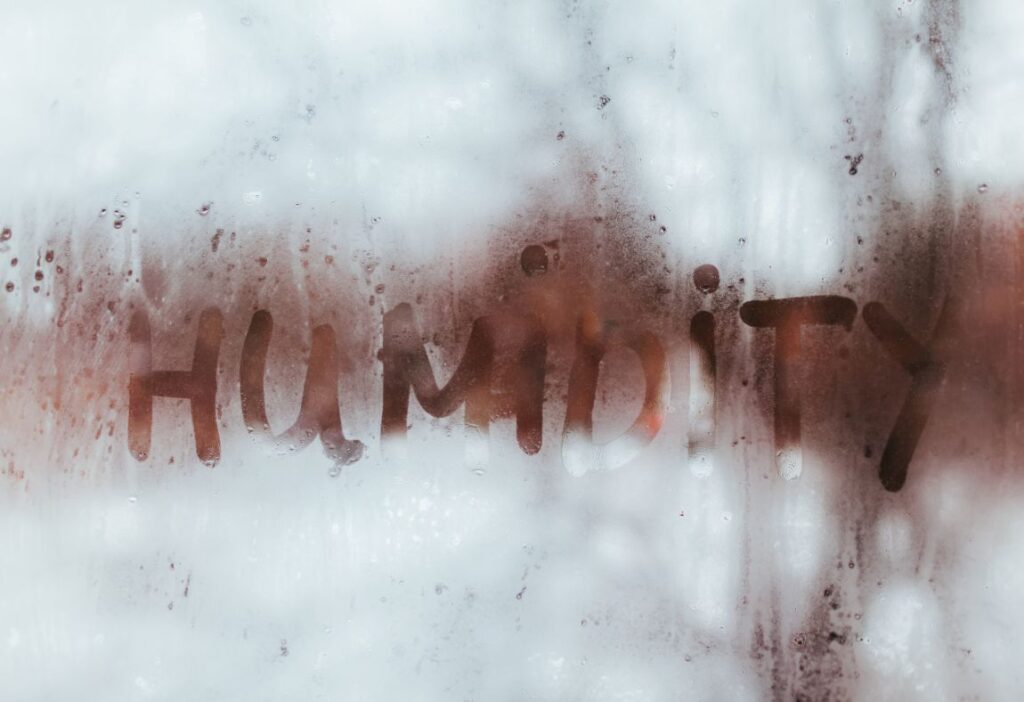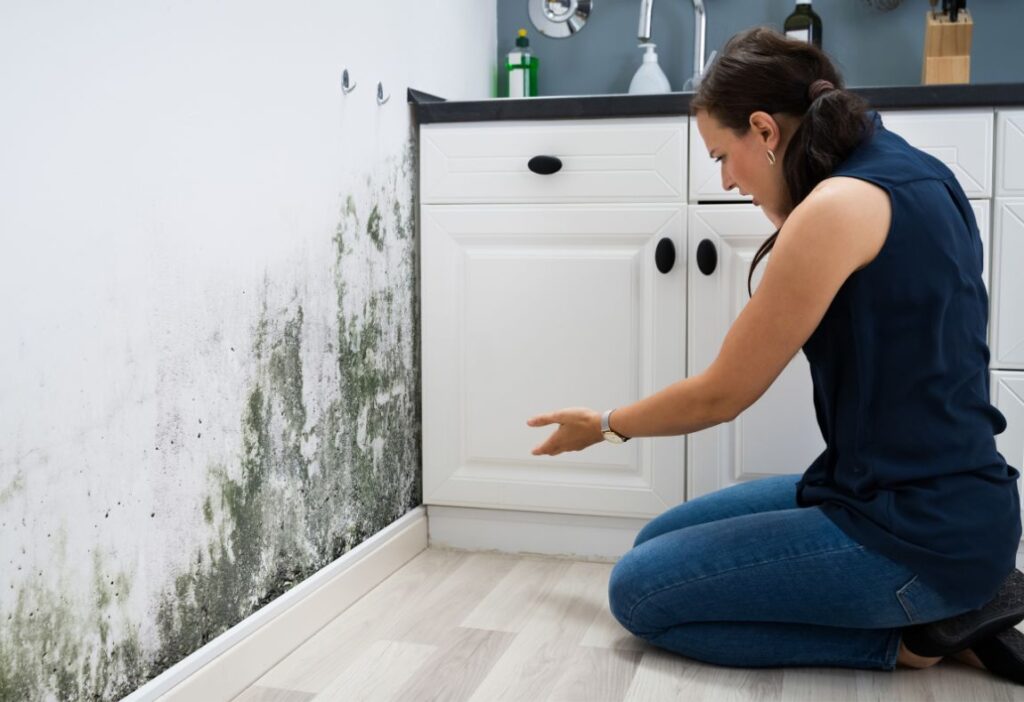How to Get Rid of Mold on Your Walls Effectively
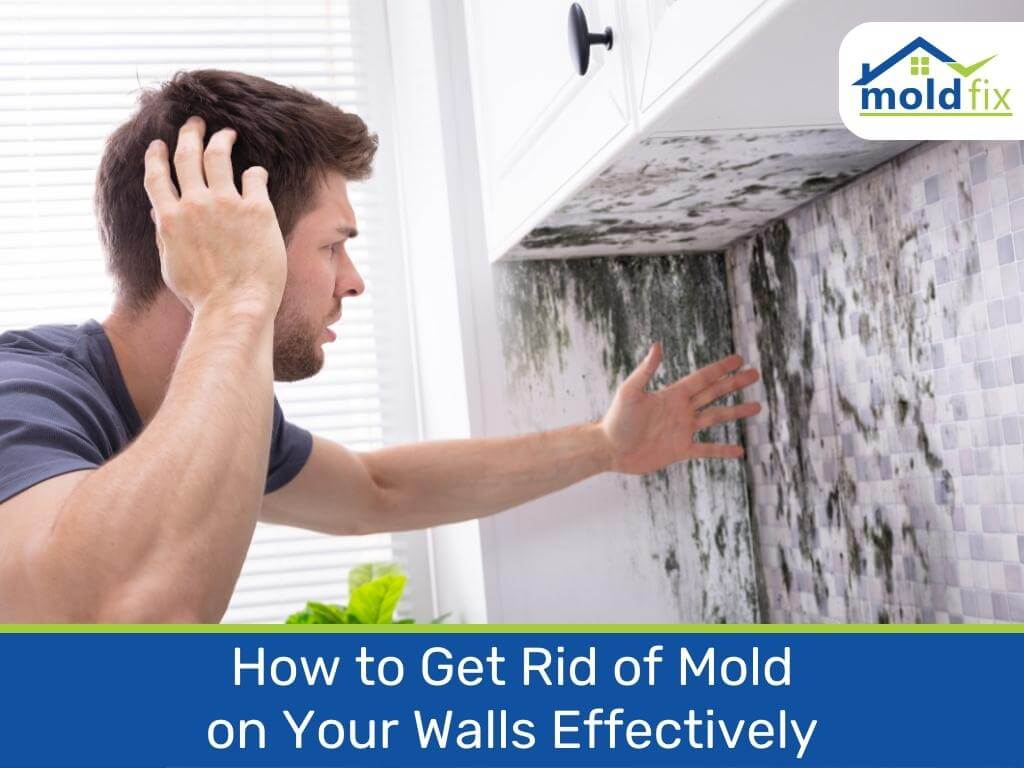
Mold is a pesky problem that can damage your walls and cause health problems. There are several methods for removing mold from drywall or other surfaces in your home – some more effective than others. Learning how to identify the type of mold quickly and taking the necessary steps to get rid of it effectively will help keep you and your family safe from its harmful effects. This guide will provide tips on how to remove mold from your walls before it takes hold in your home. But before we get into the nitty-gritty of removal, let’s understand what causes mold to grow in your home, know the different types of mold, and the common areas to check where mold may be present.
What Causes Mold to Grow in Your Home?
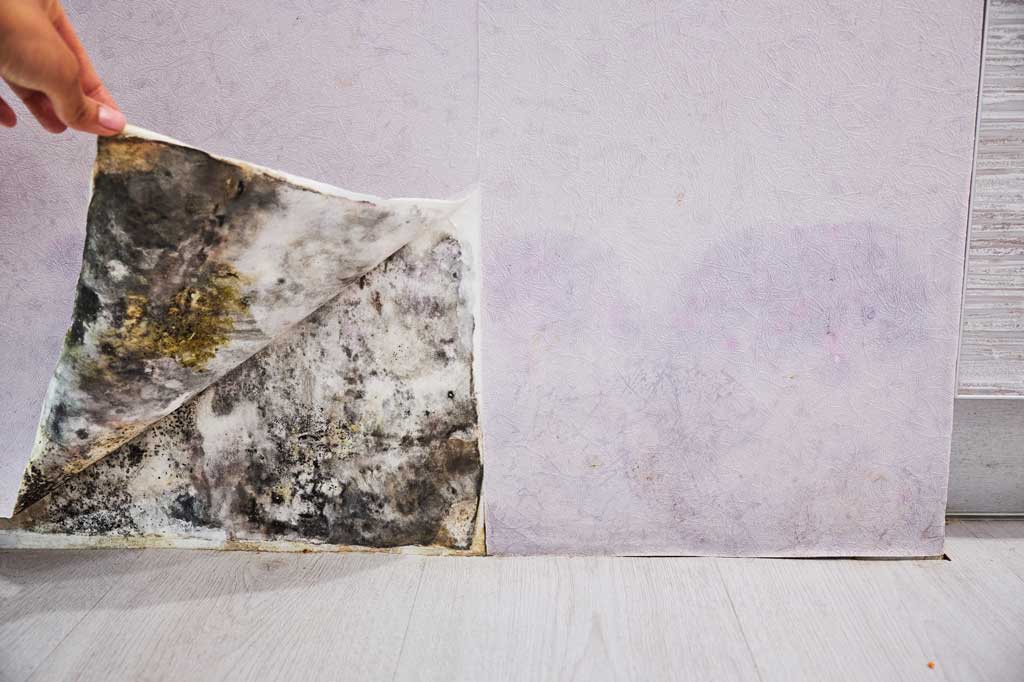
Mold is a type of fungus that thrives in damp, warm environments and reproduces by making spores. Mold spores are microscopic and can be found almost everywhere, both indoors and outdoors. They can enter your home through windows and doors or even hitch a ride on your clothing or pet. When mold spores land on a damp spot, they may begin to grow and digest whatever they are growing on in order to survive.
The most common causes of mold in homes are:
Humidity: Mold thrives in humid environments. If your home is consistently above 60% relative humidity, you might be creating a perfect home for mold.
Leaking Pipes/Roofs: Leaks in your home can cause water to accumulate, creating ideal mold-growing conditions.
Moisture: Mold needs moisture to grow. This could come from high humidity, but it could also come from water leaks, condensation in windows, or even a spill that wasn’t cleaned up right away. Appliances like washing machines, dishwashers, and air conditioners produce moisture as a by-product of their operation. This can create an environment conducive to mold growth.
Lack of Proper Ventilation: If moist air doesn’t have a chance to dissipate or be vented out, it can contribute to mold growth. This is why kitchens, bathrooms, and laundry rooms often have vents and exhaust fans.
Water Damage: If your home has had any type of water damage from flooding or leaks, there’s a good chance that mold could grow if it wasn’t properly cleaned up and dried out.
Types of Mold
Excessive mold indoors can be harmful to you and your family’s health. Different types of mold can produce allergens and irritants, which can cause health issues for people with mold allergies or weakened immune systems.
Mold comes in various types, but some of the most common ones you might encounter at home are:
- Alternaria: This is often found in damp places such as showers and under leaky sinks. It’s usually green or brown with a velvety texture.
- Aspergillus: This is an allergenic mold that often appears on walls, in insulation, or around air conditioning systems. It’s typically green, blue, or white.
- Black Mold (Stachybotrys): This toxic mold grows on high-cellulose, low-nitrogen materials such as drywall and fiberboard if they are exposed to constant moisture. It’s usually black or dark green.
- Cladosporium: This type of mold can grow in cooler areas and is often found on fabrics, wood, and interior surfaces. It can be olive-green to brown or black.
Common Areas to Check for Mold in Your House
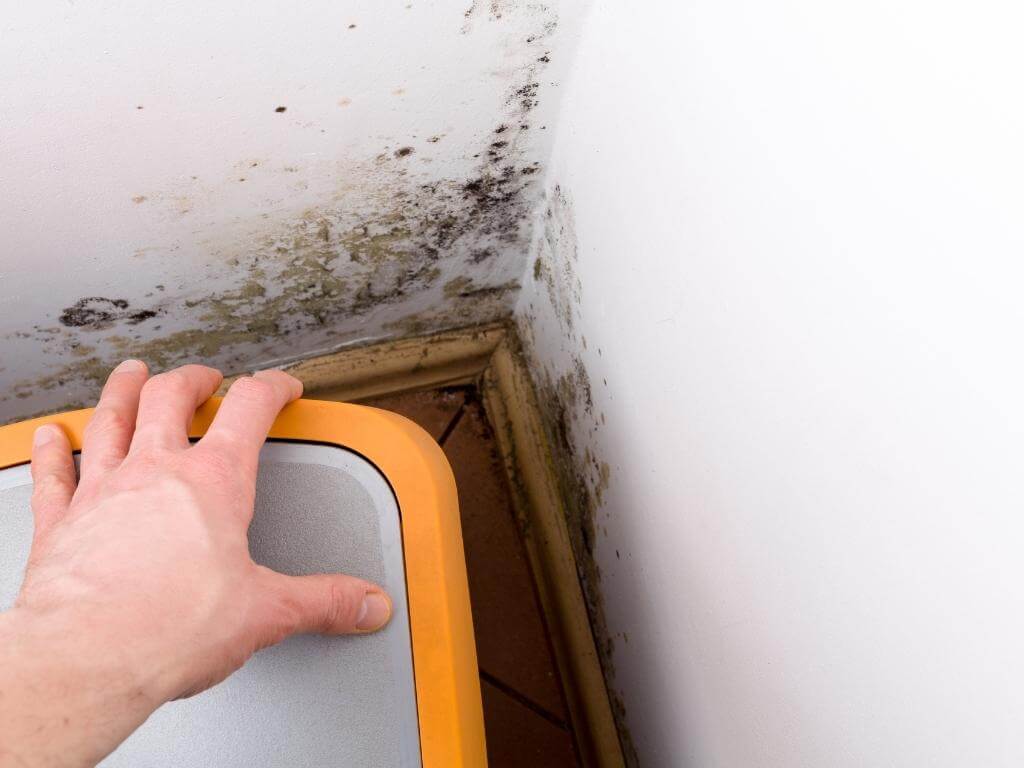
Mold can grow anywhere in a home where conditions are right, but there are certain areas that are more prone to mold growth:
Bathrooms: Due to the high humidity and moisture present from showers, baths, and sinks, bathrooms can often harbor mold. Common places to find mold in a bathroom include shower curtains, tile grout, under the sink, and around the toilet.
Kitchens: Similar to bathrooms, kitchens have a lot of moisture from cooking, washing dishes, and appliances like dishwashers. Look for mold around sinks, behind fridges, under counters, and around windows.
Basements and Crawlspaces: These areas can be prone to dampness due to their location in the ground. Basements especially can develop mold if they have ever flooded or if they don’t have a proper dehumidification system.
Attics: Improper ventilation, roof leaks, or insulation issues can lead to mold growth in attics.
Laundry Rooms: These rooms often have higher humidity levels due to the presence of washing machines and dryers, making them a potential hot spot for mold.
Windows: Mold can form around windows due to trapped moisture between the window frame and wall. Make sure you check for this type of mold growth, as it is more difficult to spot than other forms of mold.
Garages: Cars parked in garages can produce condensation and contaminants that contribute to mold growth. Check for any musty odors or visible signs of mold.
Safety Precautions Before Removing Mold
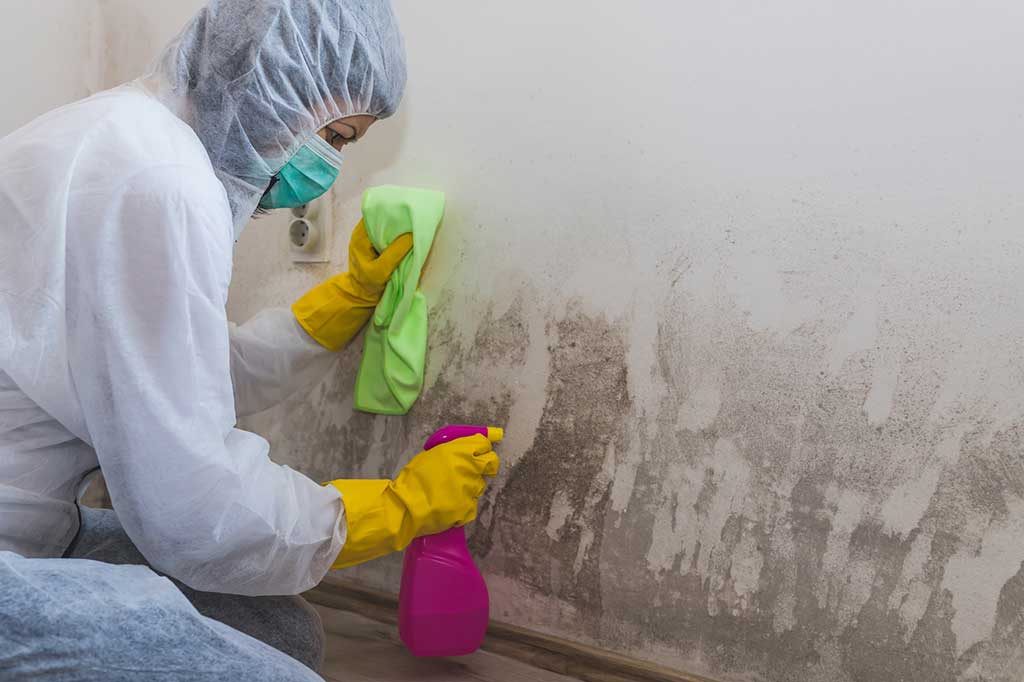
Once you’ve identified the areas of your home that could be prone to mold growth, it’s time to take steps to remove it safely and effectively. But before diving into mold removal, it’s important to take necessary safety precautions. Mold can cause health issues, especially for those with allergies or asthma. Here are some safety measures to consider:
- Wear Protective Gear: This includes gloves, goggles, and an N-95 mask to protect yourself from mold spores.
- Ensure Good Ventilation: Open windows and doors to let fresh air in and mold spores out.
- Evacuate High-Risk Individuals: If you have elderly people, children, or individuals with respiratory conditions, move them to a different location during the mold removal process.
Mold Removal Steps You Can Perform at Home
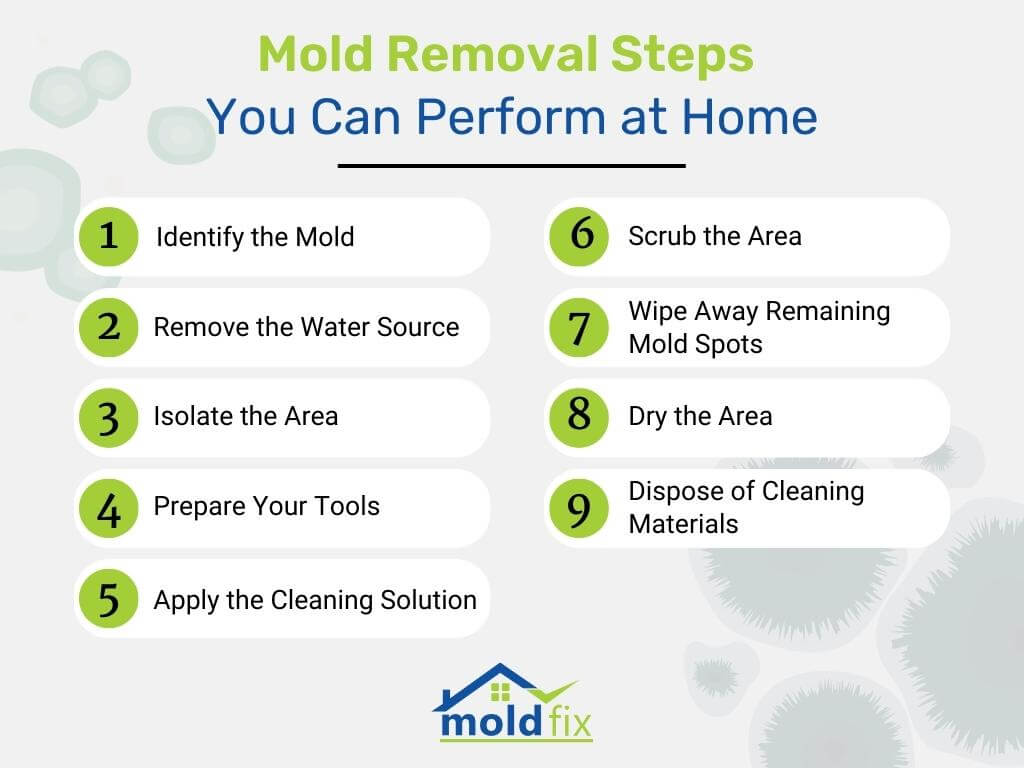
Now, let’s get down to business: mold removal. Here are the steps you need to follow.
Step 1: Identify the Mold
As we’ve discussed, different molds can grow on different materials, and the type of mold can influence the best approach for removal.
Step 2: Remove the Water Source
Mold needs moisture to survive, so the first step is to get rid of any and all sources of water. This could include fixing leaks, using a dehumidifier, or turning up your AC if it’s too humid inside.
Step 3: Isolate the Area
Use plastic sheets or tarps to create a barrier between the mold and the rest of your house. This will also help keep the mold spores from spreading.
Step 4: Prepare Your Tools
For most molds, you’ll need a scrub brush, disposable towels, a spray bottle, and a mold-killing cleaning solution.
Step 5: Apply the Cleaning Solution
Spray the affected area with the mold-killing solution and let it sit for a few minutes. You can use commercial mold removers, but a solution of 1 cup of bleach mixed with 1 gallon of water can also be effective.
Step 6: Scrub the Area
Once the solution has had time to work, use a scrub brush to agitate the mold. This will help loosen it up and make it easier to clean.
Step 7: Wipe Away Remaining Mold Spots
Once you’ve scrubbed away most of the mold, use disposable towels to remove any remaining residue or spots. Be sure to throw these away afterward.
Step 8: Dry the Area
The affected area must be completely dry in order for mold to not return. Use fans or dehumidifiers to speed up the drying process.
Step 9: Dispose of Cleaning Materials
Safely discard any towels or brushes used in the cleaning process to prevent the spread of spores.
Cleaning Solutions and Techniques
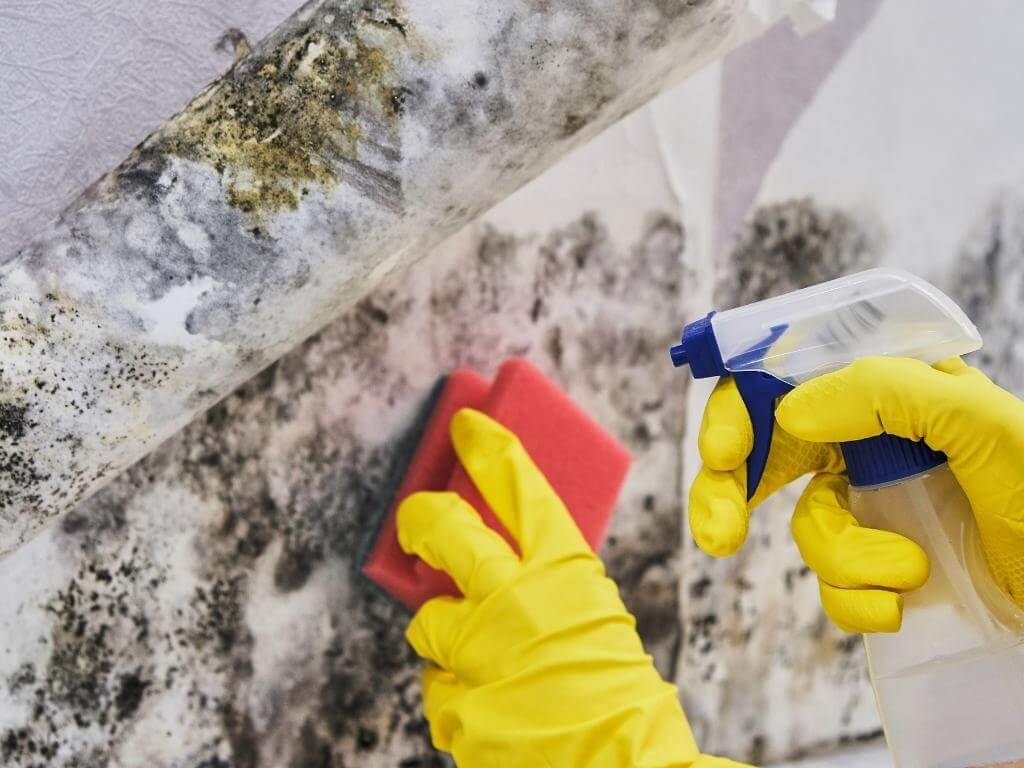
Choosing the right cleaning solution and technique is crucial for effective mold removal. Here are some options:
- Bleach: A mixture of bleach and water (1 cup of bleach per 1 gallon of water) is a common choice for mold removal. However, it’s not suitable for porous surfaces like wood and drywall because it doesn’t penetrate these materials well.
- Vinegar: Vinegar is a non-toxic alternative that can kill about 82% of mold species. Spray undiluted white vinegar onto the moldy area, let it sit for an hour, then rinse and dry.
- Baking Soda: Baking soda is safe, mild, and effective against mold. Mix a quarter tablespoon of baking soda with water in a spray bottle, shake until dissolved, spray it onto the moldy area, scrub, rinse, and dry.
- Hydrogen Peroxide: Spray 3% hydrogen peroxide onto the mold, let it sit for 10 minutes, scrub, rinse, and dry.
- Concrobium: This is a commercial product that can eliminate and prevent mold without bleach, ammonia, or VOCs. It’s suitable for various surfaces.
- Ammonia: Similar to bleach, clear (not sudsy) ammonia can kill surface mold on hard, non-porous materials. Never mix ammonia with bleach—this combination produces a toxic gas.
Best Practices in Removing Mold from Different Types of Walls
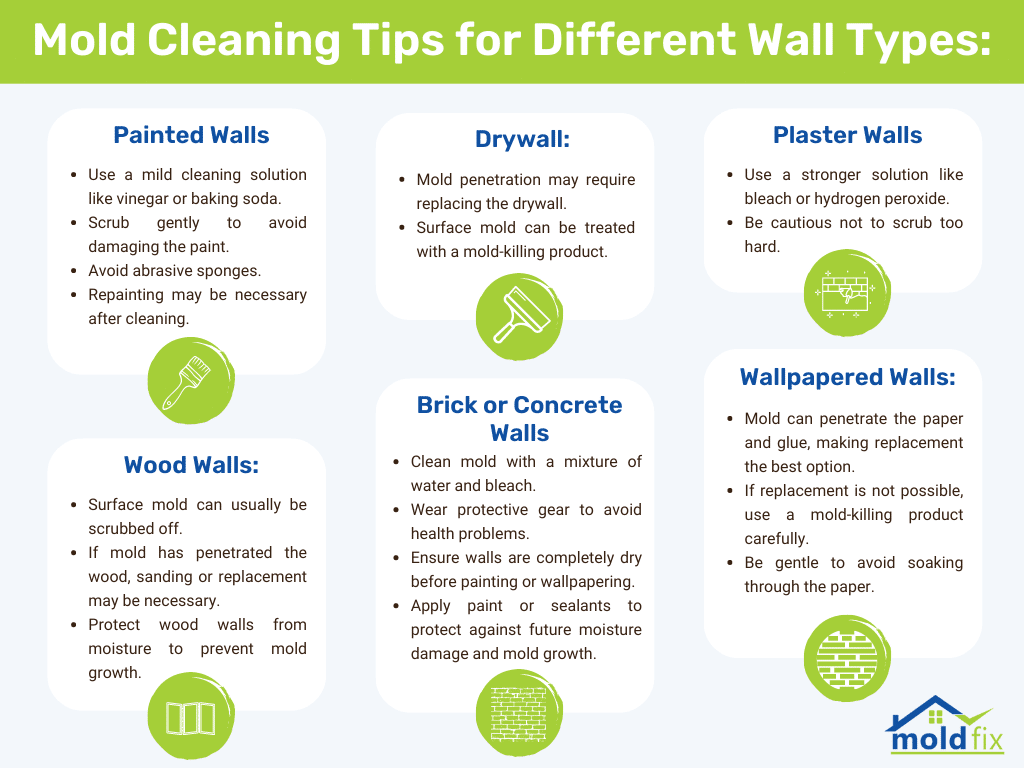
Cleaning techniques can vary depending on the type of wall.
Painted Walls: For painted walls, use a mild cleaning solution like vinegar or baking soda. Scrub gently and avoid using abrasive sponges to prevent damage to the paint. You may have to repaint the wall after cleaning.
Plaster Walls: Plaster walls require a stronger solution, such as bleach or hydrogen peroxide, but be careful not to scrub too hard.
Drywall: Mold on drywall can be difficult to remove. If the mold has penetrated the surface, the drywall will likely need to be replaced. If the mold is only on the surface, a mold-killing product can be used.
Wallpapered Walls: Wallpaper can be tricky because mold can penetrate the paper and glue. It’s often better to replace moldy wallpaper, but if that’s not an option, try a mold-killing product and be gentle to avoid soaking through the paper.
Wood Walls: These can absorb moisture, leading to mold growth. You can usually scrub surface mold off wood walls, but if the mold has penetrated the wood, it may need to be sanded or replaced.
Brick or Concrete Walls: Mold on these walls can be cleaned with a mixture of water and bleach. Be sure to use protective gear when cleaning mold, as it can cause health problems. Also, make sure that the walls are completely dry before painting or wallpapering. Paint and sealants can also help protect the walls from future moisture damage and mold growth.
How to Prevent Mold Growth
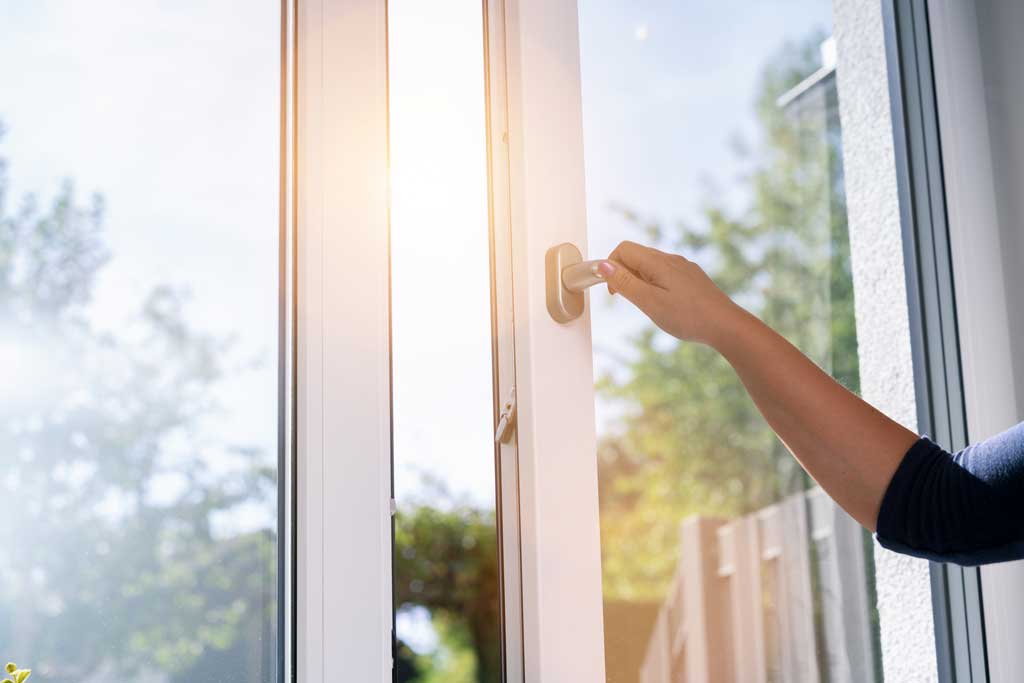
Finally, let’s talk about preventing mold growth in your home. Mold loves damp, warm places with poor ventilation, so the key is to make sure that these conditions don’t exist by taking the following steps:
1. Control Humidity
Controlling humidity is one of the most important steps to preventing mold growth in your home. A relative humidity level of 60% or below is recommended for optimal indoor air quality and for reducing the risk of mold growth. To keep your indoor humidity levels in check, you can use a dehumidifier or an air conditioner, as they are designed to help keep moisture levels down.
2. Improve Ventilation
Good ventilation is essential for keeping mold at bay and preventing it from coming back. Poor air circulation can trap moisture, creating the perfect environment for mold to thrive. Opening windows and doors regularly helps to have adequate airflow in your home by letting stale air out and fresh air in. Also, installing exhaust fans in bathrooms, kitchens, laundry rooms, or any other area where moisture is likely to accumulate can help remove excess humidity from these areas by venting it outside the house instead of allowing it to linger indoors.
3. Fix Leaks
Leaks in your home can be one of the biggest causes of mold growth, as it provides the perfect environment for mold to thrive. If not fixed quickly, these leaks can lead to extensive damage and costly repairs. This includes inspecting pipes regularly for signs of wear and tear, checking around windows and doors for air infiltration, and repairing any visible water damage immediately.
4. Clean and Dry After Flooding
Flooding in your home can be a nightmare, and it can also lead to mold growth if not taken care of properly. To prevent this, it’s important to clean and dry the affected area as soon as possible after flooding occurs. This will help reduce the risk of black mold or other types of mold from growing in your home and causing health issues for you and your family. Additionally, knowing how to remove mold from drywall is essential for preventing further damage caused by moisture buildup. Read on to learn more about the steps you should take when cleaning up after a flood!
5. Regularly Clean and Inspect Your Home
Regularly cleaning and inspecting your home is essential for preventing mold growth. Mold thrives in moist, warm environments, so it’s important to take steps to reduce moisture levels in your home and keep an eye out for any signs of mold. Regular inspections can help you identify areas that are prone to mold growth before they become a problem. Additionally, regular cleaning helps get rid of dust, dirt, and other debris that can contribute to the spread of mold spores in your home.
Conclusion
Mold can be a serious problem in your home if not addressed quickly and correctly. Regular cleaning and inspections can help you prevent it from taking hold, but if the problem has grown too large to handle on your own, it’s important to hire a professional who has the experience and expertise to safely remove the mold and ensure that it. doesn’t come back. Mold Fix is a trusted and reliable company that can help you get the job done right, so don’t hesitate to reach out if you need expert assistance in dealing with your mold problem. We will provide a comprehensive plan to remove mold and put in place preventative measures to ensure it doesn’t come back. Call (949) 449-5949 for more information, or contact us today to get a free estimate today!
